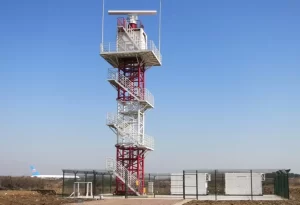Air traffic control is a critical aspect of aviation safety. It involves managing the movement of aircraft on the ground and in the air to ensure that they operate safely and efficiently. One of the key tools used by air traffic controllers is surface movement radar (SMR). Here we will explore the benefits of SMR for air traffic control and how it can help improve safety and efficiency in the aviation industry.
What is Surface Movement Radar?
Surface movement radar is a type of radar system that is used to track the movement of aircraft and vehicles on the ground. It operates by emitting radio waves that bounce off the surface of the ground and any objects on it, such as aircraft and vehicles. The radar then receives the reflected waves and uses them to create a map of the area being monitored. This map is displayed on a screen in the air traffic control tower, allowing controllers to track the movement of aircraft and vehicles in real-time.

Improved Safety
One of the primary benefits of SMR is improved safety. By providing air traffic controllers with real-time information about the movement of aircraft and vehicles on the ground, SMR helps to prevent collisions and other accidents. This is particularly important in busy airports where there are many aircraft and vehicles moving around at the same time. SMR can also help to identify potential hazards, such as debris on the runway, which can be quickly removed to prevent accidents.
Increased Efficiency
Another benefit of SMR is increased efficiency. By providing air traffic controllers with real-time information about the movement of aircraft and vehicles on the ground, SMR can help to reduce delays and improve the flow of traffic. This is particularly important in busy airports where delays can have a significant impact on the overall efficiency of the airport. SMR can also help to optimize the use of runways and taxiways, ensuring that aircraft can take off and land as quickly and efficiently as possible.
Cost-Effective
SMR is also a cost-effective solution for air traffic control. Compared to other types of radar systems, SMR is relatively inexpensive to install and maintain. This makes it an attractive option for smaller airports and those with limited budgets. SMR can also be easily integrated with other air traffic control systems, such as automatic dependent surveillance-broadcast (ADS-B), to provide a comprehensive solution for managing air traffic.
Advanced Features
Finally, SMR offers a range of advanced features that can further improve safety and efficiency in air traffic control. For example, some SMR systems can provide controllers with information about the weight and balance of aircraft, which can help to prevent overloading and other safety issues. SMR can also be used to monitor the movement of ground vehicles, such as baggage carts and fuel trucks, to ensure that they do not interfere with aircraft operations.
In conclusion, surface movement radar is a critical tool for air traffic control. It provides real-time information about the movement of aircraft and vehicles on the ground, helping to improve safety and efficiency in the aviation industry. SMR is a cost-effective solution that can be easily integrated with other air traffic control systems, and it offers a range of advanced features that can further enhance safety and efficiency. If you are interested in learning more about SMR and how it can benefit your airport or aviation operation, please visit our website at mskyeye.com.

